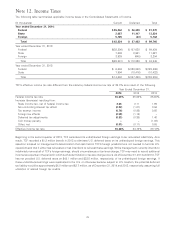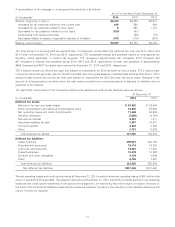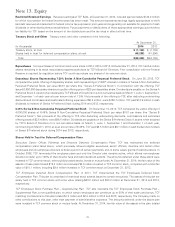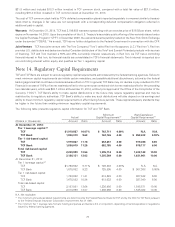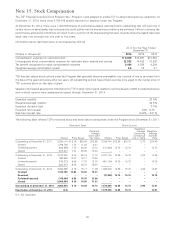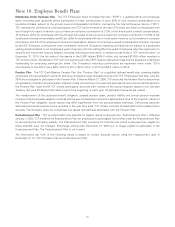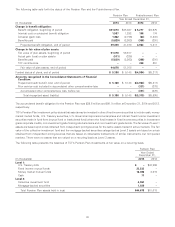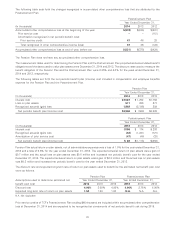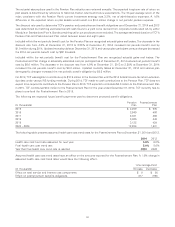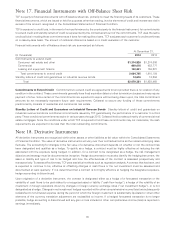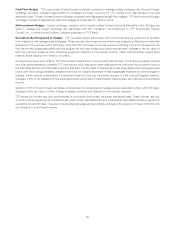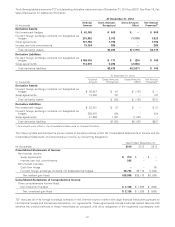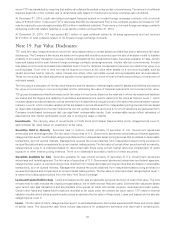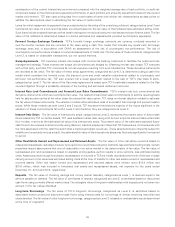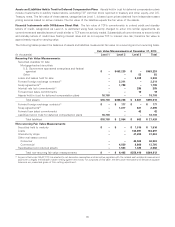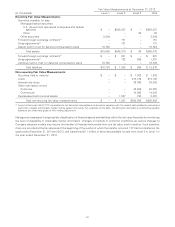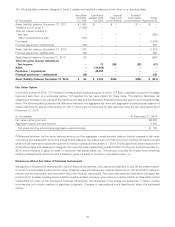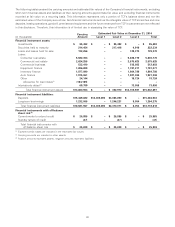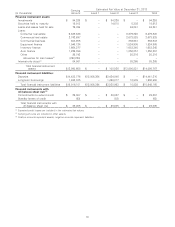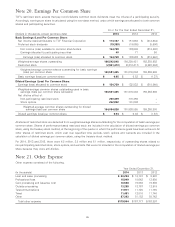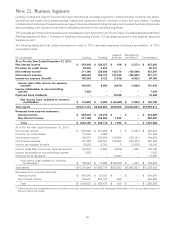TCF Bank 2014 Annual Report Download - page 99
Download and view the complete annual report
Please find page 99 of the 2014 TCF Bank annual report below. You can navigate through the pages in the report by either clicking on the pages listed below, or by using the keyword search tool below to find specific information within the annual report.Cash Flow Hedges TCF uses certain forward foreign exchange contracts to manage foreign exchange risk. Forward foreign
exchange contracts represent agreements to exchange a foreign currency for U.S. dollars at an agreed-upon price and
settlement date. Certain of these foreign exchange contracts were designated as cash flow hedges. TCF had no forward foreign
exchange contracts designated as cash flow hedges at December 31, 2014 or 2013.
Net Investment Hedges Foreign exchange contracts, which include certain forward contracts that settle within 30 days, are
used to manage the foreign exchange risk associated with the Company’s net investment in TCF Commercial Finance
Canada, Inc., a wholly-owned indirect Canadian subsidiary of TCF Bank.
Derivatives Not Designated as Hedges TCF executes interest rate swaps with commercial banking customers to facilitate
their respective risk management strategies. Those interest rate swaps are simultaneously hedged by offsetting interest rate
swaps that TCF executes with a third party, such that TCF minimizes its net risk exposure resulting from such transactions. As
the interest rate swaps associated with this program do not meet hedge accounting requirements, changes in the fair value of
both the customer swaps and the offsetting swaps are reflected in non-interest income. These contracts have original fixed
maturity dates ranging from three to ten years.
During the second quarter of 2012, TCF sold its Visa Class B stock. In conjunction with the sale, TCF and the purchaser entered
into a derivative transaction whereby TCF may receive or be required to make cash payments whenever the conversion ratio of
the Visa Class B stock into Visa Class A stock is adjusted. The fair value of this derivative has been determined using estimated
future cash flows using probability weighted scenarios for multiple estimates of Visa’s aggregate exposure to covered litigation
matters, which include consideration of amounts funded by Visa into its escrow account for the covered litigation matters.
Changes, if any, in the valuation of this swap agreement, which has no determinable maturity date, are reflected in non-interest
income.
Certain of TCF’s forward foreign exchange contracts are not designated as hedges and are generally settled within 30 days.
Changes in the fair value of these foreign exchange contracts are reflected in non-interest expense.
TCF enters into interest rate lock commitments in conjunction with certain consumer real estate loans. These interest rate lock
commitments are agreements to extend credit under certain specified terms and conditions at fixed rates and have original lock
expirations of up to 60 days. They are not designated as hedges and accordingly, changes in the valuation of these commitments
are reflected in non-interest income.
86


